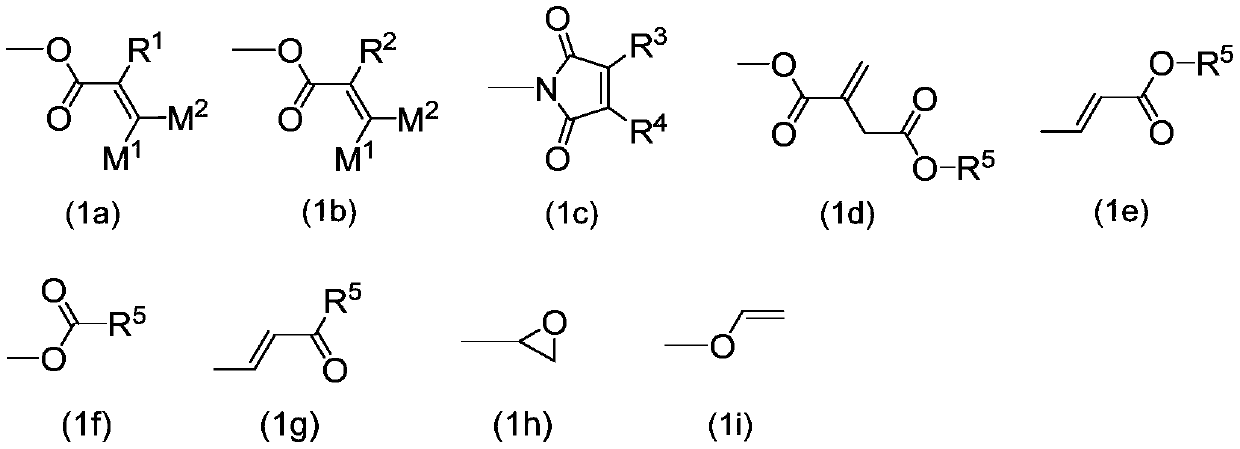Polymerizable polar compound, liquid crystal composition, and liquid crystal display element
A compound and carbon number technology, applied in the field of polymerizable polar compounds, can solve the problem of insufficient horizontal orientation of liquid crystal molecules, and achieve the effects of appropriate optical anisotropy, high voltage retention, and low viscosity
- Summary
- Abstract
- Description
- Claims
- Application Information
AI Technical Summary
Problems solved by technology
Method used
Image
Examples
Embodiment
[0368] The present invention will be described in more detail through examples (including synthesis examples and use examples of elements). The present invention is not limited by these examples. The present invention comprises a mixture of the composition of use example 1 and the composition of use example 2. The present invention also includes mixtures prepared by mixing at least two of the compositions of the use examples.
[0369] 1. Examples of compound (1)
[0370] Compound (1) was synthesized by the procedures shown in Examples. Unless otherwise specified, the reaction was carried out under a nitrogen atmosphere. Compound (1) was synthesized by the procedures shown in Example 1 and the like. The synthesized compounds are identified by methods such as nuclear magnetic resonance (nuclear magnetic resonance, NMR) analysis. The properties of the compound (1), the liquid crystal compound, the composition, and the device were measured by the following methods.
[0371] ...
Synthetic example 1
[0418] Synthesis of Compound (No.164)
[0419]
[0420] Step 1
[0421] Compound (T-1) (30g), 3,4-dihydro-2H-pyran (23.3g), pyridine p-toluenesulfonate (Pyridinium p-Toluenesulfonate, PPTS) (5.80g), dichloromethane ( 300ml) into the reactor and stirred at 50°C for 10 hours. After the insoluble matter was separated by filtration, the reaction mixture was poured into water, and the aqueous layer was extracted with dichloromethane. The organic layer was washed with water and dried over anhydrous magnesium sulfate. The solution was concentrated under reduced pressure, and the residue was purified by silica gel chromatography (volume ratio, heptane:ethyl acetate=2:1) to obtain compound (T-2) (39.5 g; 80%).
[0422] Step 2
[0423] Compound (T-2) (39.5g), tetrahydrofuran (THF) (400ml), MeOH (100ml) and water (400ml) were put into the reactor and cooled to 0°C. Lithium hydroxide monohydrate (15.4 g) was added thereto, returned to room temperature, and stirred for 12 hours. ...
Synthetic example 2
[0437] Synthesis of Compound (No.165)
PUM
 Login to View More
Login to View More Abstract
Description
Claims
Application Information
 Login to View More
Login to View More - R&D
- Intellectual Property
- Life Sciences
- Materials
- Tech Scout
- Unparalleled Data Quality
- Higher Quality Content
- 60% Fewer Hallucinations
Browse by: Latest US Patents, China's latest patents, Technical Efficacy Thesaurus, Application Domain, Technology Topic, Popular Technical Reports.
© 2025 PatSnap. All rights reserved.Legal|Privacy policy|Modern Slavery Act Transparency Statement|Sitemap|About US| Contact US: help@patsnap.com



